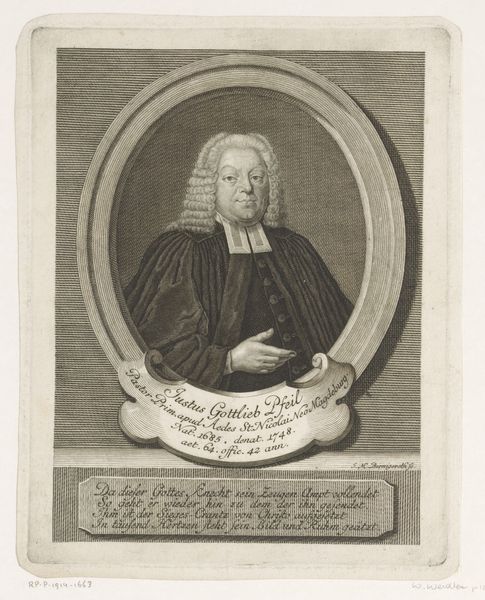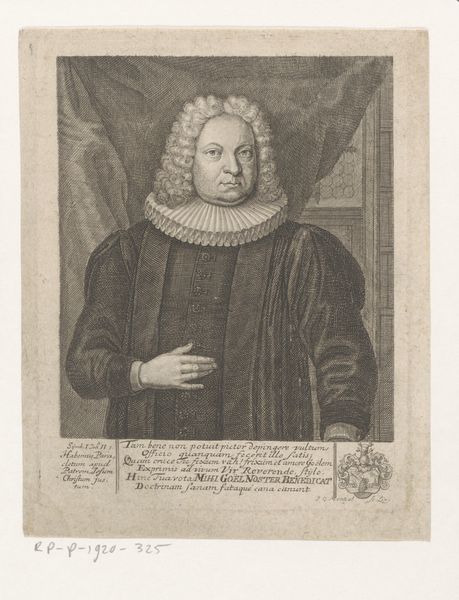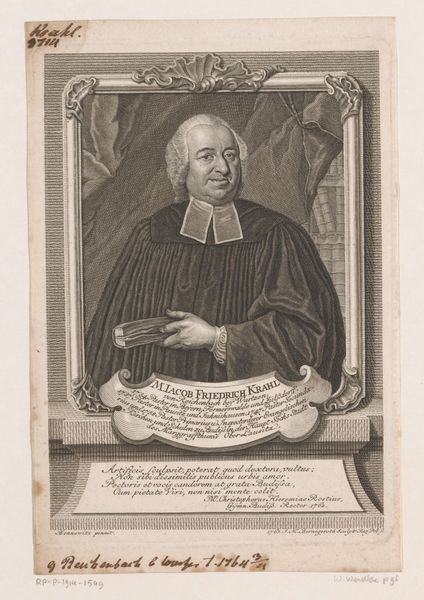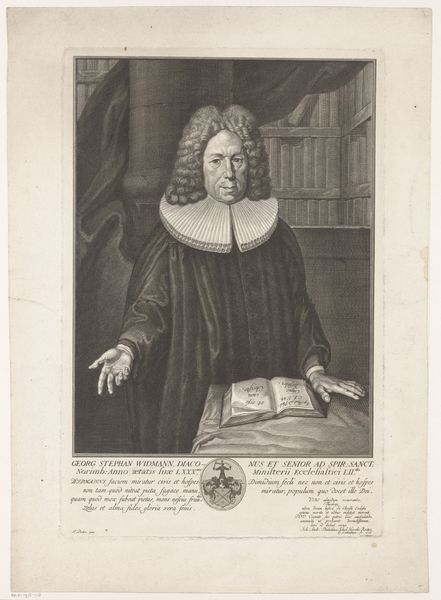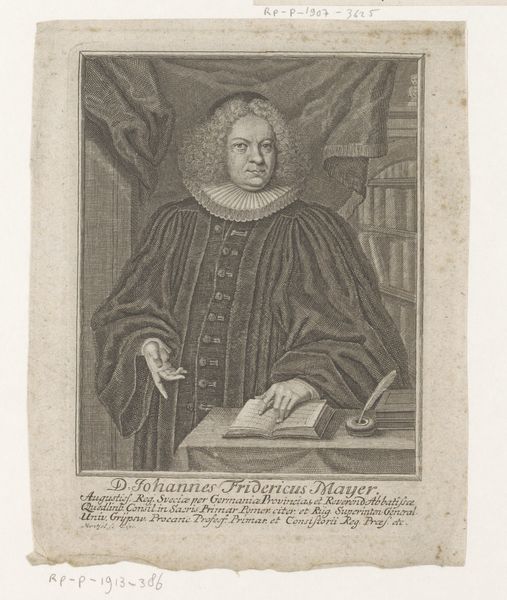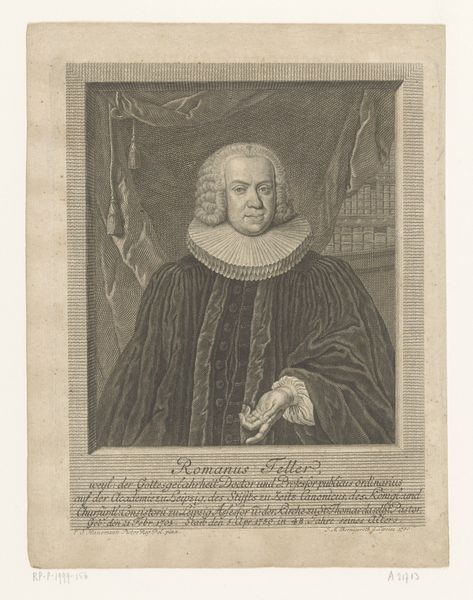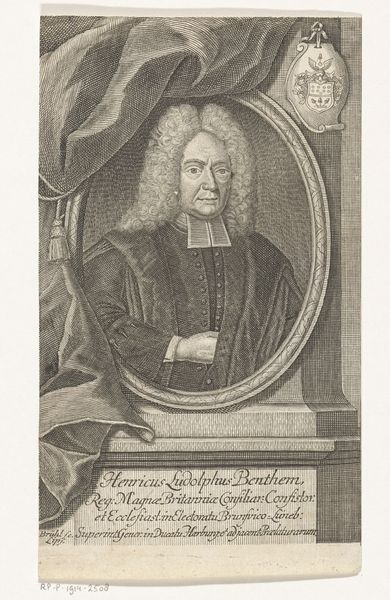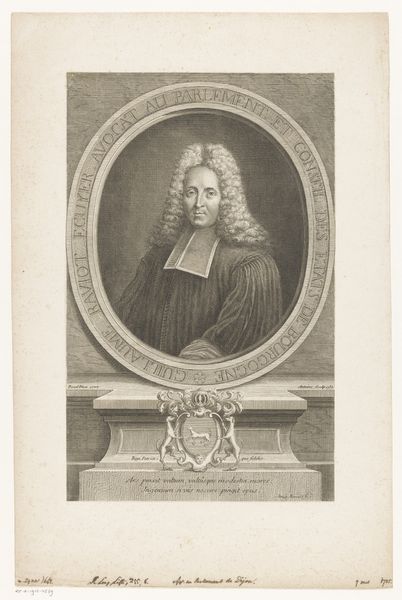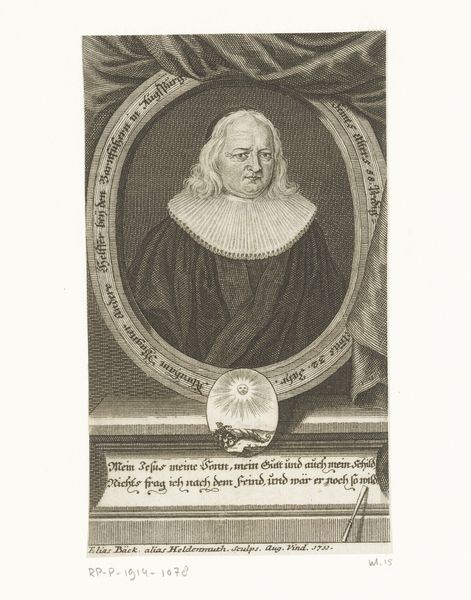
drawing, print, etching, paper, engraving
#
portrait
#
drawing
#
baroque
# print
#
etching
#
figuration
#
paper
#
line
#
engraving
Dimensions: height 325 mm, width 222 mm
Copyright: Rijks Museum: Open Domain
This is Martin Bernigeroth’s engraving of Gottfried Springer. It’s a print, and copies of it would have circulated widely in the German lands in the early 18th century. Here, Springer, is framed by an oval that is decorated with Latin text celebrating his accomplishments as a scholar. Below, the family crest sits above a short Latin poem praising the engraver’s skill. In its time, printmaking was a powerful tool for spreading ideas and images, and in the Germanic lands there was a strong culture of portraiture among the elites, as it was considered a demonstration of civic virtue. The institutions of church, state, and family were considered vital to social order, and portraits were frequently used as emblems of prestige and authority. What can be seen in this portrait is a demonstration of Springer's importance as a scholar. To understand this image better, we would want to look at the history of printmaking, portraiture, and the institutions of learning in the Holy Roman Empire. The meaning of art, you see, is always contingent on its social context.
Comments
No comments
Be the first to comment and join the conversation on the ultimate creative platform.

